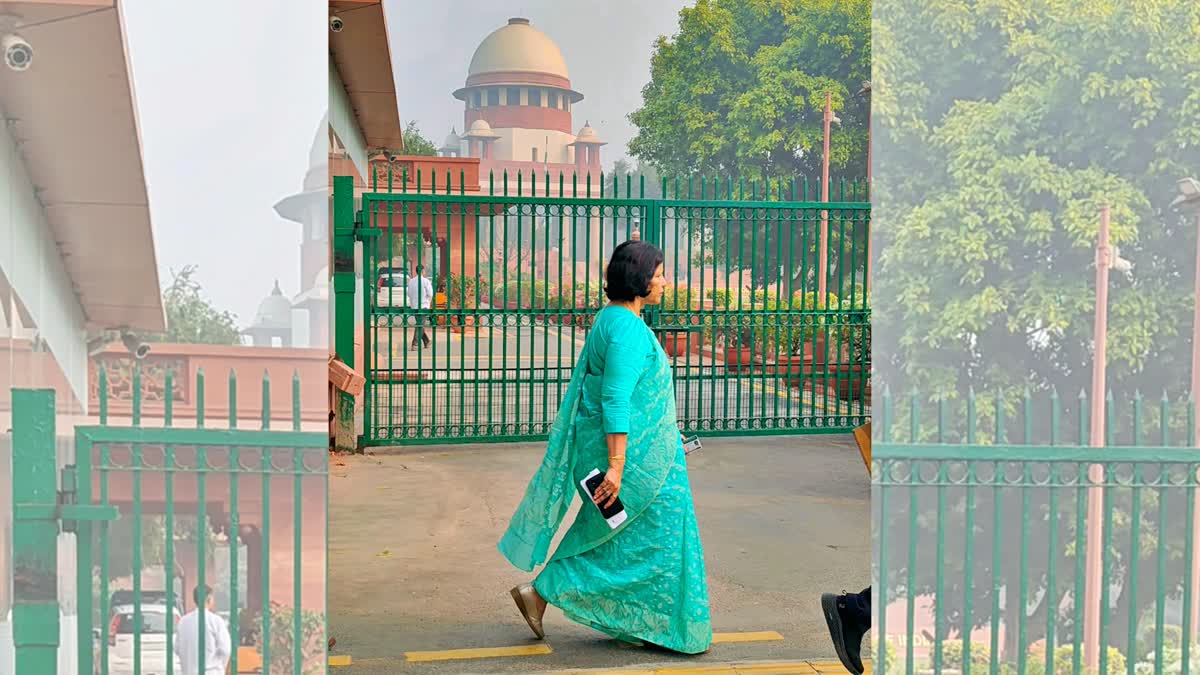New Delhi: A seven-judge constitution bench of the Supreme Court on Friday delivered four separate judgments in the Aligarh Muslim University minority status case. At the outset, Chief Justice D Y Chandrachud, who led the bench, said there were four separate opinions, including three dissenting verdicts. The CJI said he has written the majority verdict for himself and Justices Sanjiv Khanna, JB Pardiwala, and Manoj Misra. Justices Surya Kant, Dipankar Datta, and Satish Chandra Sharma dissented with the majority opinion.
The CJI said the majority opinion has overruled the 1967 judgment in the case of S. Azeez Basha v. Union of India, where a five-judge constitution bench held that Aligarh Muslim University was not a minority institution. However, the apex court did not answer whether Aligarh Muslim University (AMU) is a minority educational institution.
It said that another bench would be constituted to decide on a 2006 order by the Allahabad High Court overturning minority status of the educational institution.
A seven-judge constitution bench led by Chandrachud had reserved the judgment on whether the AMU can be considered a minority institution under Article 30 of the Constitution.
The CJI, reading the majority judgment, said that the view taken in Azeez Basha, which became the basis for denying the minority status to the AMU, is overruled. However, the CJI left it to a three-judge bench to decide afresh the minority status of the AMU based on the principles evolved in this judgment.
The CJI, who read the majority judgment, held that a minority institution must be both established and administered by a minority and added that the minority institution, prior to the Constitution, would also get equal protection under Article 30.
The CJI said the court cannot deny minority status to an institution just because it has been established by a parliamentary legislation. He said that various other factors surrounding such establishment and other aspects ought to be taken into account.
The CJI said it is not necessary that the purpose of the minority can be implemented only if the persons of the minority administer the institution. He said it is also not necessary to prove that administration rests with the minority to prove the institution to be a minority institution.
The majority judgment emphasized that the test is whether the institution exudes minority character and operates in the interest of the minority.
The CJI, in the 118-page majority judgment, said the view taken in Azeez Basha that an educational institution is not established by a minority if it derives its legal character through a statute, is overruled.
The minority status of the AMU, established in 1875, was restored by the Parliament through the AMU (Amendment) Act in 1981. The Allahabad High Court, in January 2006 had however struck down the provision of the 1981 law. The 1981 law had accorded minority status to AMU. In 2019, the issue was referred to a seven-judge bench.
The CJI, in his majority opinion, said the purpose of Article 30(1) is also to guarantee a 'special right' to religious and linguistic minorities that have established educational institutions, and this special right is the guarantee of limited state regulation in the administration of the institution.
"The State must grant the minority institution sufficient autonomy to enable it to protect the essentials of its minority character. The regulation of the State must be relevant to the purpose of granting recognition or aid, as the case may be. This special or additional protection is guaranteed to ensure the protection of the cultural fabric of religious and linguistic minorities," said the CJI.
The CJI said that it is not necessary to prove that the administration vests with the minority to prove that it is a minority educational institution because the very purpose of Article 30(1) is to grant special rights on administration as a consequence of establishment. “To do otherwise, would amount to converting the consequence to a pre-condition”, he said.
The CJI said the right to administer is guaranteed to minority educational institutions to enable them to possess sufficient autonomy to model the educational institution according to the educational values that the community wishes to emphasise. “It is not necessary that the purpose can only be implemented if persons belonging to the community helm the administrative affairs. This is so particularly because a minority institution may wish to emphasise secular education," he said.
